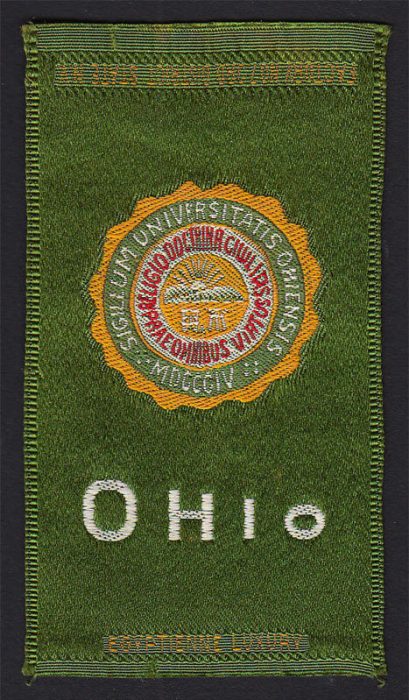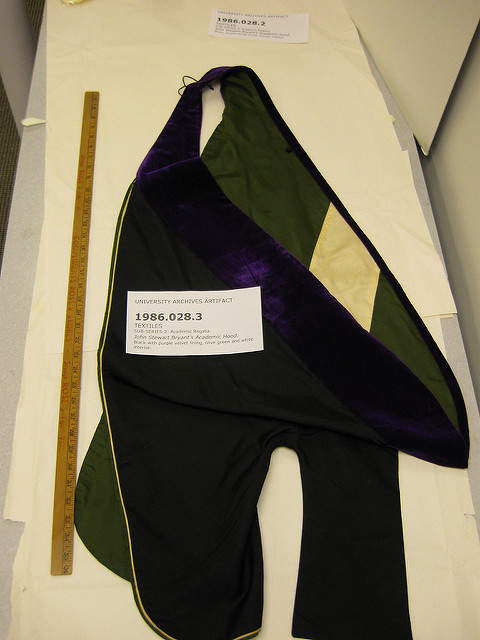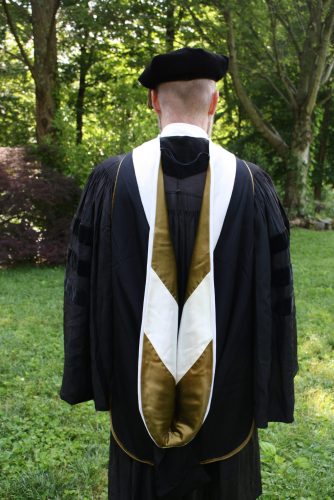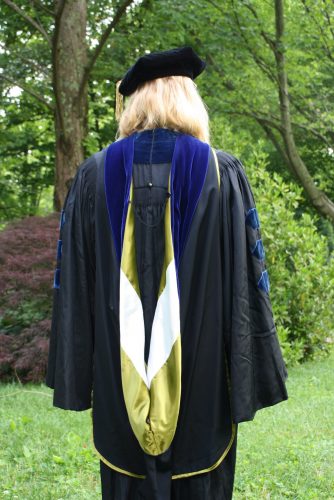Ohio University
Ohio
1804



The Ohio State Normal College was a client of academic costume manufacturer Cotrell & Leonard in 1902, according to Concerning Caps, Gowns and Hoods: Bulletin 17 (1902). But no description of the college’s hood is given in the catalogue, and it is not certain to which of two Ohio schools this catalogue citation refers, as the first Ohio State Normal Colleges opened both at Miami University and at Ohio University in 1902. Since Cotrell & Leonard was also the depository of the Intercollegiate Bureau of Academic Costume (IBAC), the IBAC must have assigned a hood lining pattern to one (or both) of these universities by 1902 at the latest.
The first definitive and complete Intercollegiate Bureau of Academic Costume description of Ohio University’s hood lining was in 1927 where it was stated to be olive green with a white chevron. Based upon color samples sent by Ohio University to the Bureau, the IBAC defined the “olive green” of the university’s hood as a dark shade of green, which was consistent with the way the Bureau defined the olive green Faculty color for Pharmacy. An identical hood lining description was cited in a 1948 Intercollegiate Bureau source.
However, a list compiled by Kevin Sheard in Academic Heraldry in America (1962) described the university’s hood lining as green with a white reversed chevron, and this inversion of the chevron is repeated in Bureau lists from 1969 and 1972. This was probably an mistake in Sheard’s research that was erroneously transcribed into later IBAC lists, since no extant vintage Ohio University hoods display a reversed chevron.


In 1890 the students of Ohio University adopted blue and white as their school colors (some sources say blue and gray). But in 1896 a football coach who had graduated from Dartmouth College was hired to coach the team. Before he arrived, he suggested that Ohio change its blue to the dark green color of Dartmouth to create a dark green and white combination of school colors. So in the fall of 1896, Ohio University students voted in favor of his proposal, slightly modifying Dartmouth’s dark green to dark “olive green” for Ohio. Before the coach arrived at Ohio University he withdrew from the job, but his school color suggestion remained. Over the years Ohio’s dark olive green has sometimes been interpreted as a medium olive green hue, but the historic shade is a dark olive green often described as “hunter green”.
Citations in the World Almanac (listed by cover date; color information is from the previous year): olive green/white (1897-1935)


